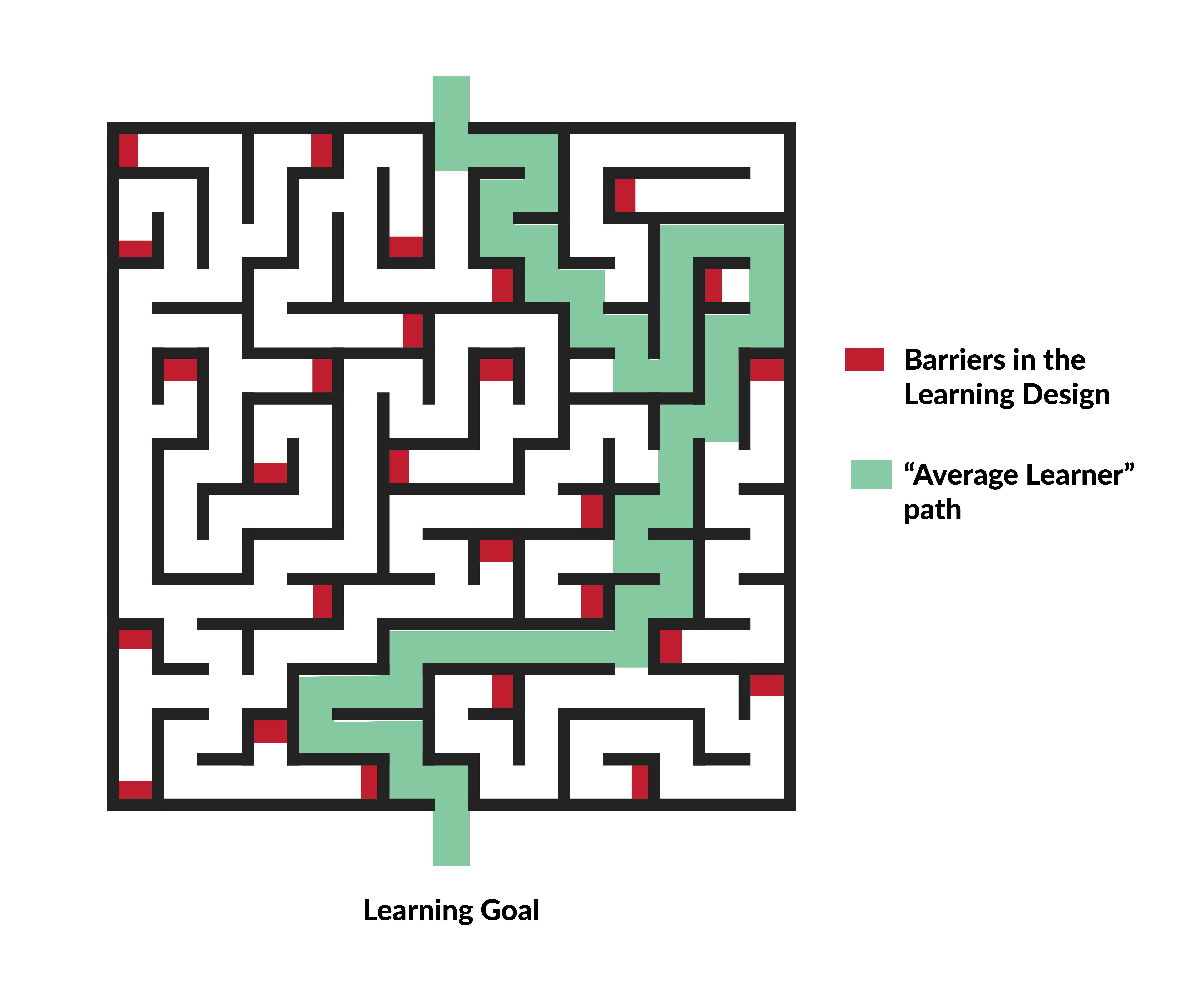Too often learning experiences are designed around the "average learner." This type of design generally consists of one way to learn the content (e.g., reading) and one way to express understanding (e.g., essay). The problem inherent in this design is that it is full of unnecessary barriers that leave many learners struggling to achieve the learning goal. By removing these barriers we create multiple paths that all lead back to the same learning goal.
Essentially, a barrier is anything that prevents the learner from learning the content and reaching your learning goal.
If the traditional curriculum design was a maze, it would have one path to reach the goal and be full of barriers (Figure 1). If you've ever tried to complete a maze, you know the process is to generally try a path until you reach a barrier. Then you can either backtrack, or start back at the beginning and try a different path. You repeat this process until you finally reach the exit and complete the maze. If you enjoy mazes then you'll enjoy this process and feel a sense of satisfaction upon reaching the goal.

If the goal of your curriculum is to make it as difficult as possible to reach the learning goal, then by all means follow the maze model. Your learners will keep bumping into barriers and trying new methods over and over until they can finally (hopefully) reach the learning goal. If, however, you want to focus on the learning goal and NOT the path, then you should remove barriers from your curriculum to open up multiple paths that all lead to the same learning goal.
Two of the biggest sources of barriers are in the way content is represented and the methods allowed for learners to express understanding.
By providing multiple means of representation for your content you provide learners with various ways to engage. Learners who are strong readers will choose readings; learners who are stronger visually will choose videos. You can diversify your content by including readings, videos with transcripts, audio, etc. that all revolve around the same learning goal. You can further differentiate the types of readings you assign to your learners: academic papers, magazine articles, blog posts, newspaper clippings, and so on.
Providing learners with multiple options to express their understanding gives them the autonomy to choose and be an agent in their own learning. Being flexible on the means of expression (written essay, visual essay, audio podcast, art project, etc.) ensures that learners will be able to appropriately express their understanding of a particular topic.
You'll have to judge for yourself which methods of representation and expression make the most sense for your content as some of these options will not always work in every context. Just try to focus on providing as many as possible to ensure you're providing alteranative paths that all lead back to the same learning goal.
The maze below (Figure 2) is a copy of the maze in Figure 1 except that several barriers have been removed. By eliminating just a handful of barriers we have created three viable paths that can be used to complete the maze. This might not make for a very challenging maze, but it would make an excelltent start to a curriculum. Let's let mazes be mazes, and focus on making our curriculum amazing!

If you enjoyed this post, sign up for our newsletter for more tips and strategies. If you’re ready to take the next step in your online course and fully unlock learner potential, check out our online course—Supercharge Your Online Course—and other professional development opportunities.

Learning Key is committed to providing a website that is accessible to the widest possible audience, regardless of technology or ability. We are actively working to increase the accessibility and usability of our website. In the meantime should you experience any difficulty in accessing the Learning Key website or tools, please don’t hesitate to contact us at support@learningkeyworks.com.